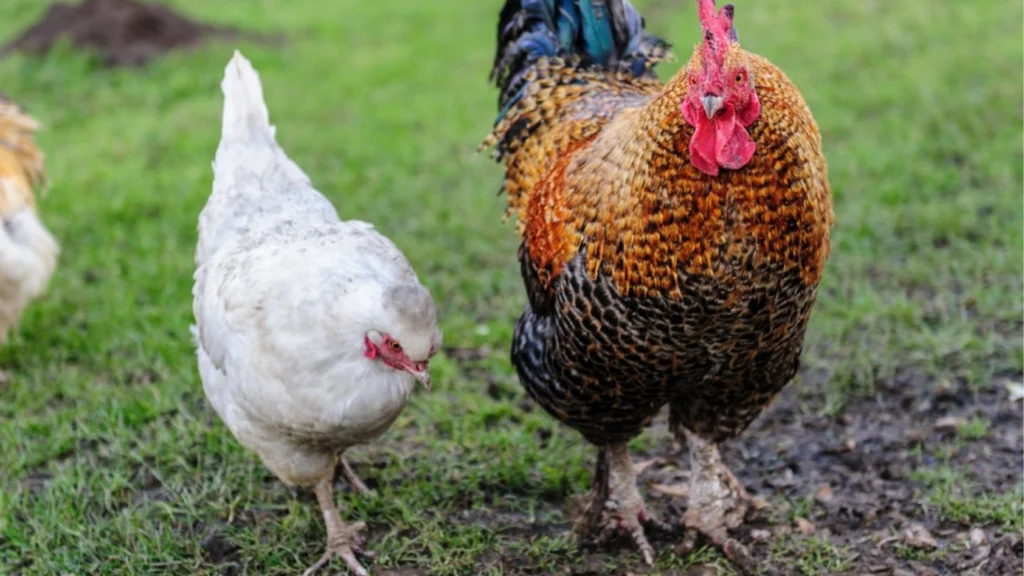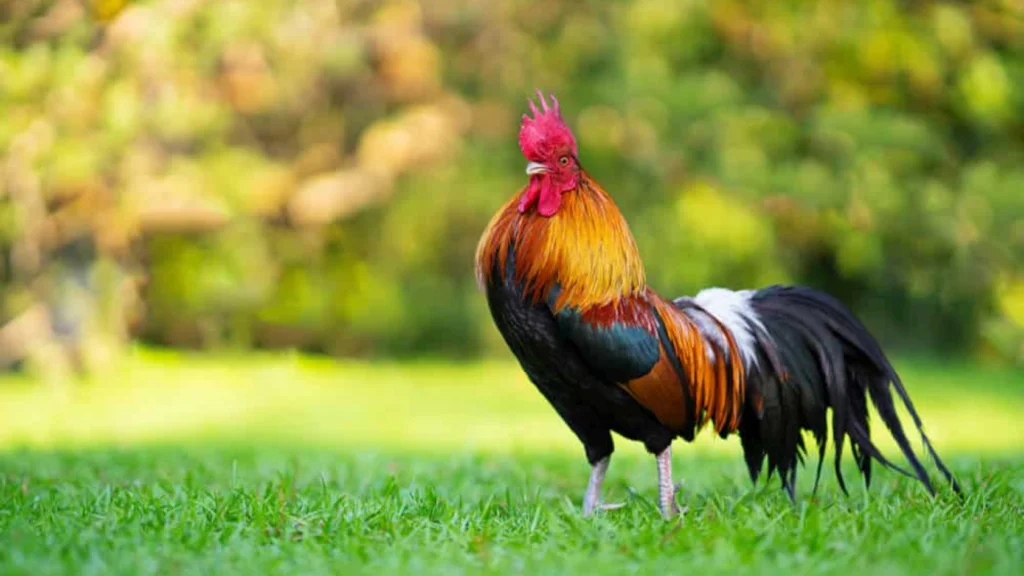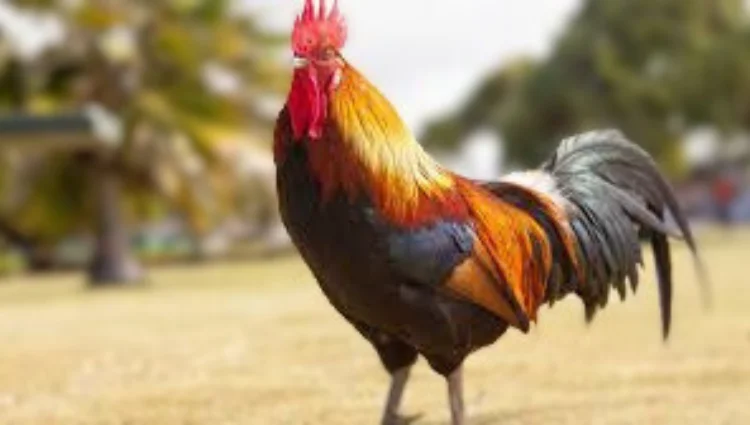Roosters have long been a common sight on poultry farms, but when it comes to our dinner tables, they are notably absent. The question arises: why don’t we eat roosters? In this article, we will delve into the various reasons behind this intriguing phenomenon, exploring the cultural, nutritional, and ethical factors that contribute to the exclusion of roosters from our diets. From understanding the purpose of roosters in poultry farms to exploring alternative uses for these birds, we will shed light on the complexities surrounding rooster meat consumption.
Roosters, also known as male chickens, play a crucial role in the world of poultry farming. They are characterized by their vibrant plumage, crowing calls, and protective nature. While hens, the female counterparts, are commonly consumed for their meat and eggs, roosters have largely been excluded from the dining table. The reasons for this exclusion go beyond mere culinary preferences and extend into cultural, nutritional, and ethical domains.
What are Roosters?
Before we delve deeper into the reasons why roosters are not commonly eaten, let’s take a moment to understand what roosters actually are. Roosters are male chickens that typically possess physical traits distinct from hens. They exhibit colorful feathers, a larger size, and prominent combs and wattles on their heads. Roosters also produce a signature crowing sound, which serves as a territorial call.
The Purpose of Roosters in Poultry Farms
In poultry farms, roosters serve several important purposes. Their primary function is to fertilize eggs laid by hens, ensuring the continuation of the flock. Roosters also act as protectors, sounding alarms in the presence of potential threats. Additionally, they establish a social hierarchy within the flock, maintaining order and harmony among the chickens.
Why Don’t We Eat Roosters?
The exclusion of roosters from our diets can be attributed to several factors. Firstly, rooster meat is often considered less desirable than that of hens.
- Tough meat: Roosters tend to have tougher meat than hens, due to their more active lifestyle and higher levels of testosterone. This can make them less desirable for consumption.
- Smaller size: Roosters are generally smaller in size than hens, which means that there is less meat to be gained from them. This makes it less economical to raise them for meat.
- Less meat: Roosters also have less meat on their bodies than hens do, particularly in the breast and thigh areas that are popular for consumption.
- Lower egg production: Roosters do not lay eggs, unlike hens. This means that they do not have a dual purpose like hens do, and are therefore less useful to farmers.
- Cultural and traditional reasons: In many cultures, roosters are seen as symbols of masculinity and are used in religious rituals, which makes it culturally inappropriate to eat them. Additionally, in some cultures, roosters are considered too tough and gamy to be used for food, while hens are seen as more suitable for consumption.
Differences Between Roosters and Hens

To better understand why roosters are not commonly eaten, it is essential to recognize the differences between roosters and hens. While both are members of the chicken species, there are distinct characteristics that set them apart. Roosters tend to have larger body sizes, more vibrant plumage, and exhibit territorial behaviors such as crowing. Hens, on the other hand, are known for their egg-laying capabilities.
Roosters in Cultural and Symbolic Contexts
Roosters hold cultural and symbolic significance in various societies around the world. In many cultures, roosters are revered as symbols of courage, strength, and virility. They are often associated with sunrise, awakening, and protection against evil spirits. These symbolic associations contribute to the reverence and protection of roosters, making their consumption less common.
Nutritional Value of Rooster Meat
While rooster meat may be less popular for consumption, it still possesses nutritional value. Rooster meat is a good source of protein, vitamins, and minerals. It is relatively low in fat and cholesterol compared to certain cuts of beef and pork. However, due to its gamier taste and tougher texture, rooster meat is often overlooked in favor of other poultry options.
Health and Safety Considerations
When it comes to consuming any type of meat, health and safety considerations are paramount. Proper handling, storage, and cooking techniques must be followed to ensure the elimination of harmful bacteria and prevent foodborne illnesses. These considerations apply to rooster meat as well, emphasizing the importance of practicing safe food preparation and cooking practices.
Alternative Uses for Roosters
Although rooster meat may not be widely consumed, there are alternative uses for these birds. Roosters can be utilized in the production of pet food, livestock feed, and even as organic fertilizers. By exploring these alternative avenues, roosters can still contribute to various industries without being solely consumed as food.
Ethical Perspectives on Consuming Roosters
The ethical considerations surrounding the consumption of roosters are multifaceted. Some argue that the exclusion of roosters from our diets is a matter of compassion and respect for these creatures. Others contend that if roosters are raised in humane conditions and slaughtered ethically, their meat can be part of a sustainable and responsible food system. These differing viewpoints shape the ongoing discourse regarding rooster meat consumption.
Rooster Population Control

The population control of roosters poses a challenge in poultry farms. As roosters are not as commonly consumed as hens, their numbers can quickly exceed the required ratio for breeding and flock maintenance. Poultry farmers employ various strategies to manage rooster populations, including rehoming, repurposing, or culling. These approaches aim to strike a balance between maintaining flock dynamics and ensuring efficient resource allocation.
Challenges in Rooster Meat Production
Rooster meat production presents unique challenges compared to hen meat production. The longer time required for roosters to reach maturity, coupled with the inherent toughness of their meat, poses obstacles to commercial meat production. As a result, the market demand for rooster meat is relatively low, limiting its availability and economic viability.
Rooster Meat in Traditional and Regional Cuisines
While rooster meat may not be as prevalent in mainstream cuisines, it still holds a place in various traditional and regional dishes.
In some cultures, rooster meat is valued for its distinct flavor and texture, often utilized in stews, soups, and braised dishes. These culinary traditions highlight the cultural diversity and adaptability of rooster meat consumption.
The Potential for Rooster Meat Market
Despite the current limitations surrounding rooster meat consumption, there is potential for market growth and innovation. As consumer preferences evolve and sustainability becomes a greater concern, the unique qualities of rooster meat, such as its distinct flavor and nutritional value, can be leveraged to cater to niche markets. This could open up new opportunities for rooster meat producers and consumers alike.
Roosters and Cockfighting
Cockfighting, a blood sport involving roosters, has been a controversial topic intertwined with the perception of roosters. While the practice itself is banned in many countries due to animal welfare concerns, it continues to persist in some regions. The association between roosters and cockfighting has further contributed to the perception of roosters as symbols of strength and aggression rather than food sources.
Rooster Meat and Environmental Impact
Like any form of meat production, rooster meat production has environmental implications. The resources required to raise, feed, and process roosters contribute to carbon emissions, water usage, and land utilization. However, compared to larger livestock species, such as cattle or pigs, the environmental impact of rooster meat production is relatively lower. Implementing sustainable practices in poultry farming can further mitigate these effects.
The Future of Rooster Meat Consumption
The future of rooster meat consumption is shaped by various factors, including shifting consumer preferences, sustainability considerations, and cultural influences. As awareness of food waste and sustainable practices increases, there may be a renewed interest in utilizing roosters for their meat. The development of innovative culinary techniques and the exploration of alternative markets can contribute to the resurgence of rooster meat as a viable food source.
Why Don’t We Eat Roosters FAQs
Q 1: Can you eat roosters?
Yes, roosters can be eaten, but they are less commonly consumed compared to hens. The meat of roosters is often considered tougher and gamier in flavor.
Q 2: What is the difference between roosters and hens?
Roosters are male chickens, while hens are female chickens. Roosters are larger in size, possess vibrant plumage, and produce crowing sounds.
Q 3: Why are roosters not commonly eaten?
Roosters are not commonly eaten due to several reasons, including the tougher texture of their meat, longer time to reach maturity, and cultural and symbolic associations.
Q 4: What are the alternative uses for roosters?
Roosters can be utilized in pet food, livestock feed, and organic fertilizers. These alternative uses provide value without focusing solely on rooster meat consumption.
Q 5: Is rooster meat nutritious?
Rooster meat is a good source of protein, vitamins, and minerals. It is relatively low in fat and cholesterol compared to certain cuts of beef and pork.
Q 6: Are there ethical concerns with consuming roosters?
The ethical considerations surrounding rooster meat consumption vary. Some argue that excluding roosters from our diets is compassionate, while others advocate for responsible and ethical production practices.
Q 7: How are rooster populations controlled?
Rooster populations are controlled through methods such as rehoming, repurposing, or culling. These strategies help maintain the desired ratio within poultry flocks.
Q 8: Is cockfighting connected to rooster meat consumption?
Cockfighting is a controversial blood sport associated with roosters. While banned in many countries, it has influenced the perception of roosters as symbols of strength rather than food sources.
Q 9: What are the challenges in rooster meat production?
Challenges in rooster meat production include longer maturity periods, toughness of the meat, and limited market demand. These factors affect the economic viability of rooster meat production.
Q 10: What is the future of rooster meat consumption?
The future of rooster meat consumption depends on evolving consumer preferences, sustainability considerations, and cultural influences. Niche markets and innovative culinary techniques can contribute to its resurgence.
Conclusion
In conclusion, the question of why we don’t eat roosters encompasses a range of factors, including taste preferences, economic viability, cultural significance, and ethical considerations. While rooster meat may not be as common in our diets, it holds nutritional value and cultural importance in various traditions. As our understanding of sustainability and food production evolves, there may be opportunities to rediscover and appreciate the unique qualities that rooster meat brings to the culinary world.













